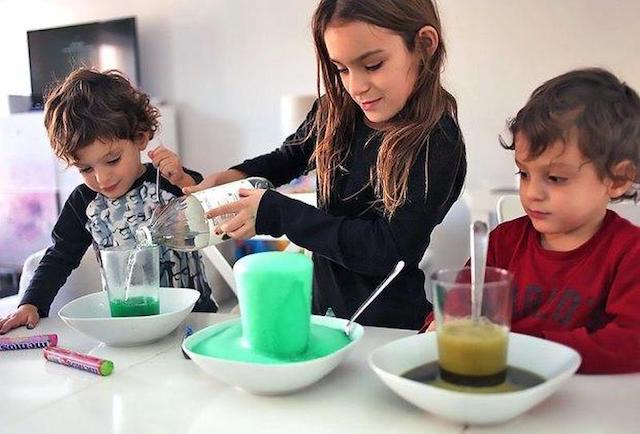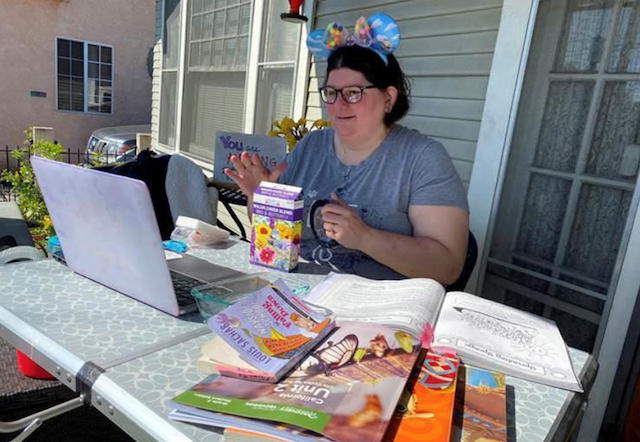With most schools out across the country due to the coronavirus lockdown, science teachers have been getting creative when it comes to finding experiments to keeep their students entertained.

“My thing has been to get science into their homes and get them doing science… it’s about discovery,” said Lockhart, Texas science teacher Avri DiPietro, who’s assigned a “burping bag” experiment to her 160 or so students between the ages of 11 and 14.
The assignment calls for her sixth graders to combine vinegar and baking soda in a plastic bag, either in their kitchens or backyards. If all goes as planned, burps and belches will ring out across the small southeastern Texas town where DiPietro teaches, as the acidic vinegar meets the sodium bicarbonate, releasing gas from the bag. -Reuters
“This is pushing a lot of us educators in how to reach our kids,” said DiPietro.
As Reuters notes, teachers across the country have been scrambling to develop lesson plans with just a few days notice following a national lockdown to keep COVID-19 from spreading (a strategy which has come under increasing scrutiny). The challenge, of course, is keeping children from becoming distracted and tuning out.
DiPietro says that assigning hands-on experiments is a great way for students to stay engaged without access to the school laboratory.
Teachers will typically post lists of the ingredients needed for the experiment, detailed instructions, and possible observations and outcomes in their virtual classrooms. Then students spring into action, raiding their home’s pantries and cabinets for materials before turning their back porches and kitchens into makeshift science labs. -Reuters
“It really makes parents understand what teachers go through on a day-to-day basis… they have to find innovative ways to keep our kids busy,” said parent Heather Simpson, whose son Houstin is one of DiPetro’s students. Houstin made a “homemade lava lamp” using water, food coloring, salt, oil and a jar.
Meanwhile, second graders at Park Elementary School in Fairmount – a rural town in northeast Indiana, conducted a “walking water” experiment using strips of paper towels, food coloring, water and cups. Which we’re sure their parents had fun cleaning up.
“I understand now!” said one student in a video posted to Twitter, after successfully demonstrating “capillary action” – which allows liquid to flow upward in narrow spaces.
His teacher, Rebecca Freel, is happy watching her students make progress.
“It entertains me to watch their videos and seeing their pictures,” she said, adding “They are learning more from doing this than if I just gave them a paper to do or a website to go on. They really have to dive in and think.”
That said, it’s not always easy thinking of experiments for students when they don’t have access to online learning, or don’t have the necessary ingredients and materials for experiments. Because of this, most of the assignments are simple, and many are optional or for extra credit.
Glendora, California science teacher Libby Birmingham has been holding a virtual classroom from her front porch since her school closed on March 13 – conducting experiments such as the “cloud in a jar” – which uses shaving cream, water and food coloring to show precipitation.
“I’m trying to get them to be inquisitive and asking questions,” said Birmingham.

In another experiment known as “dancing raisins,” Birmingham showed how carbon dioxide affects the volume of fruit when it’s submerged in a carbonated liquid.
“They are fizzing… whoa… they have fizz bubbles on them. Cool,” exclaimed one of her students.
Written for and published by Zero Hedge ~ April 23, 2020
